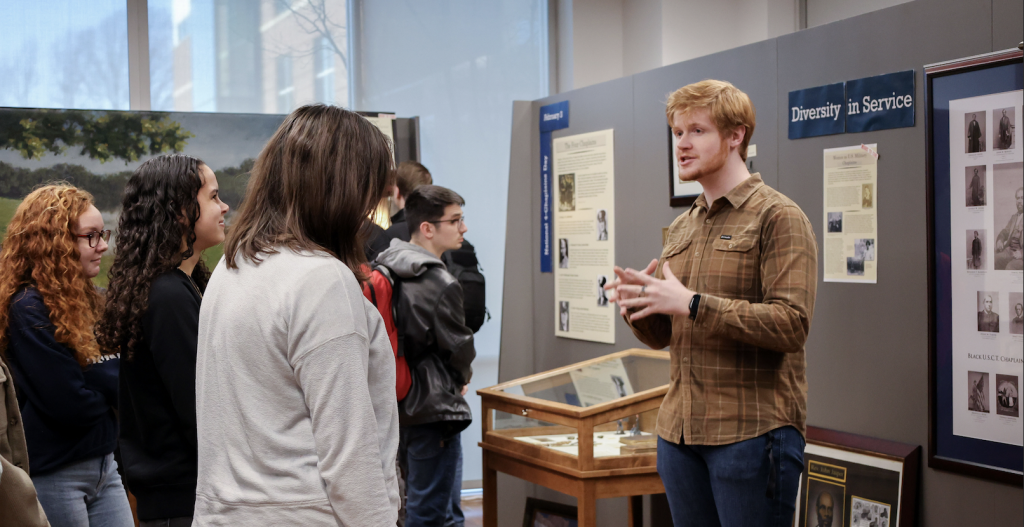The military chaplain corps dates back to 1775, and on this campus, there has been a museum to honor the chaplains of the American Civil War. That museum has been expanded to share the stories of incredible sacrifices from all U.S. military conflicts. The new Chaplains Museum held an open house on Friday, Feb. 3 to begin sharing the stories.
The new museum recently relocated to the bottom floor of the Jerry Falwell Library beside the Curriculum Library. It has moved three times in its tenure on Liberty’s campus, beginning in DeMoss Hall, and then moving to a portion of the building that now hosts Slim Chickens.
The museum shared the space with the former Doc’s Diner before eventually moving to a space beside the Hancock Welcome Center that was previously offices for the radio station.

The museum was formerly called the National Civil War Chaplains Museum and focused solely on the role of the chaplains during the Civil War period, which is when the role of military chaplain became an official military position.
“It was during the Civil War that the office of chaplain in the Army became more clearly defined and standardized with established duties, rank, pay, etc.,” Director of Public History Initiatives Donna Donald said. “During World War I, the office became more fully professionalized with more stringent requirements and qualifications.”
One of the most prominent features of the museum are the wall-sized paintings by Paul Dinwiddie. The paintings displayed throughout the museum depict both actual events of the chaplains during the Civil War and stories inspired by the chaplains’ service.
The new location gives the museum more space for displays. Because of this, the museum can feature exhibits in all periods of chaplain history.
With the larger space, the museum dedicates separate rooms to the different parts of the life of a chaplain. One room features a shipping coffin that was accurate to the Civil War era and other items that display the process of mourning. Another room, referred to as “The service to the Gospel,” features a display of the revivals that were prevalent throughout the Civil War era, along with a Dinwiddie painting depicting a public baptism, which includes both Confederate and Union soldiers.

“Visitors in a museum space get to experience history in a three-dimensional way, which brings the people and events to life in a different way than just reading about it,” Donald said. “The chaplains are typically a neglected portion of American history. … I think it’s important to understand this aspect of Christian ministry.”
Active military chaplains were also in attendance to help answer questions from the museumgoers and explain the role of chaplains further.
“The chaplain’s responsibility in the military is to be a frontline defender for the freedom of religion,” Chaplain (Maj.) Brian Harvey said. “We are, as chaplains, called to serve everyone.”
Students are also making their contribution to the museum. A room is currently being researched by an interior design student to replicate an era-accurate style that depicts what a traditional room in the Civil War era was like. Another student in the fashion design program is working on making a replica mourning gown that was traditionally worn by women during the period. The music playing throughout the museum is a 90-minute composition of hymns done for the museum as a practicum by a music production student.
The museum is currently looking for students to provide their experience and skills. Specifically, students looking to do research into the separation of church and state or students interested in doing research into endorsing agencies and the place of Christian teaching during wartime are invited to email the museum.
The museum is also looking for contributors for museum stories and objects. For more information about the museum, email chaplainsmuseum@liberty.edu.
Billingsley is a news reporter for the Liberty Champion
